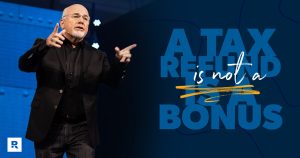Credit: Images by Getty Images; Illustration by Issiah Davis/Bankrate
If you’re looking to invest $100,000, then you’re in a good position. Combine that nest egg with the power of time and you could be looking at real financial security in the future. In fact, with time you could turn that money into a million or two, even without being an investing genius.
Here’s how to invest $100,000 and what you need to watch out for along the way.
How to invest $100,000
1. Start today
It’s hard to overstate how important time is to your returns. Compounding can work miracles on your money, and that’s why it’s vital to start investing today, even if you don’t have $100,000. For example, look at the power of time when using some typical investment returns:
| Starting amount | Annual return | After 10 years | After 20 years | After 30 years | After 35 years | After 40 years |
|---|---|---|---|---|---|---|
| $100,000 | 8% | $215,893 | $466,096 | $1.01 million | $1.48 million | $2.17 million |
| $100,000 | 10% | $259,374 | $672,750 | $1.74 million | $2.81 million | $4.53 million |
Starting with $100,000 and adding no more money, you could roll up more than $1 million with returns of 8 percent annually over 30 years. But if you can give yourself another five years, you can have nearly 50 percent more, while another decade gets you more than $2 million. Of course, the numbers get much better with 10 percent annual returns and more time.
If an 8 percent annual return seems high, you should know that it’s below the average rate of return of 10 percent for an investment available to everyone, regardless of their knowledge or income. (More on that exact investment in a moment.) So it’s important to start investing today.
2. Determine what you want to invest for
You’ll need to understand what you’re investing for and why, since you may be able to take advantage of extra bonuses that could help your money compound even faster:
- General wealth: If you’re looking to build long-term wealth from your money, then you can use a standard brokerage account available at all online brokers. You’ll have to pay taxes on any dividends and realized capital gains, though any investment that you don’t sell can compound with no immediate tax liability. If you want to use your money before retirement age — say, if you’re a FIRE investor — this option may be best for you.
- Retirement wealth: If you’re looking to use your money to fund your retirement, then your options include employer-sponsored retirement plans such as a 401(k), as well as an IRA. These accounts can help you defer or avoid taxes on your investment gains, meaning that you can compound your money faster. Employer-based accounts may offer you a matching contribution, helping you grow your wealth even faster. However, they’re harder or costly to access before you hit retirement age, normally defined as 59 ½.
- Specific goal: If you’re looking to invest for a specific goal — say, a house — then you’ll want to carefully calibrate your investments to when you need the money. The more distant the time period, the more risk you can take and the higher the potential return. You’ll need a brokerage account to get the best returns rather than a bank account.
Your goal will help you determine which kind of account to open and then later how to invest.
Need an advisor to help you set your goals?
Need expert guidance when it comes to managing your investments or planning for retirement?
Bankrate’s AdvisorMatch can connect you to a CFP® professional to help you achieve your financial goals.
3. Figure out how you’ll invest
Now, you can think about exactly how you’ll invest your money, and you have three big options in front of you:
- Manage it yourself: If you’re managing your money yourself — whether it’s in a taxable account or a retirement account — you get to call all the shots, for both good and bad. So you’ll want to know what you’re doing. The good news is that even new investors can beat most investors, even the pros, with a few simple investment funds.
- Go with a robo-advisor: If you’d rather not manage your money, you can turn to one of the top robo-advisors. A robo-advisor can create a portfolio based on your time horizon (when you need the money) and how much risk you’re willing to take. Then you can simply add your money to the account and the robo-advisor does the investing. One key advantage of robo-advisors is that their management fees are relatively inexpensive, often about 0.25 percent of your assets annually, or $25 for every $10,000 invested.
- Hire a financial advisor: Another option is hiring a financial advisor to provide a comprehensive investment strategy and help you plan for the future. An advisor might charge a flat fee or one based on your assets, and with the latter you could expect to pay 1 percent of assets per year. You’ll need to find an advisor to work with you and who fits your needs, requiring some legwork up front. Bankrate’s financial advisor matching tool can help you find someone in your area in minutes.
Each approach has its own benefits and drawbacks, so you’ll need to understand how much time and effort you want to put into your investments.
4. Make your investments
Making investments may not be as complicated as some think, and that’s especially true if you’re working with a robo-advisor or human advisor. But investing your money is not all that difficult even if you’re doing it yourself:
- If you’re managing your money: Whether you’re managing a retirement account such as a 401(k) or IRA, you’ll need to choose the investments. A great pick for investors is an index fund based on the S&P 500 index, which includes hundreds of America’s top companies. Over time, it’s averaged about a 10 percent annual return, and any investor of any skill level can buy the fund, hold on and end up beating the vast majority of investors — even the pros. New investors managing their own accounts should look for a mutual fund or exchange-traded fund with a great long-term track record.
- If a robo-advisor is managing your money: Once you’ve set up your investing plan, you deposit money into the account and the robo-advisor does the rest. Many robo-advisors allow you to track your progress toward key goals, and you can check your account at any time of day.
- If a human financial advisor is managing your money: One of the key advantages of working with a financial advisor is that the advisor does it all. So you can let the advisor manage your portfolio, but it’s a good idea to make sure you’re working with a financial advisor aligned with your needs. Here are the top questions to ask a financial advisor.
Whichever way you go, you’ll want to understand how your money is being invested.
If you’re investing for the long term — more than five years out — you can afford to take on more risk. In practice, that means you can have a portfolio that is heavily weighted to stocks or stock funds. A broadly diversified portfolio of stocks tends to deliver the best returns over time, but you’ll have to ride out stocks’ notorious short-term volatility to enjoy those attractive returns.
If you need the money sooner, then more exposure to safer assets works better. While you can still own stocks, advisors generally recommend balancing your stocks with bonds or bond funds. Bonds tend to fluctuate less and they pay regular income, smoothing out a portfolio’s returns.
5. Use dollar-cost averaging and add more money to your account
If you have a big lump sum of money such as $100,000 and you’re ready to invest, it’s a good idea to invest that money regularly over time — for example, over a year. Putting all your money in the market at once exposes you to “timing risk” — the risk that you buy too high and lose a lot of money quickly as the stock market goes down. You have a couple ways to fight timing risk:
- Use dollar-cost averaging: Dollar-cost averaging involves adding money to your investments over time and thereby reducing the risk that you buy at a relatively high point. You’ll get an average purchase price over time, ensuring you don’t buy too high.
- Make additional investments: While you may start investing with a lump sum, it’s important to add additional money to your account over time beyond your initial $100,000. You’ll continue to even out your purchase price with each purchase.
Besides the value of reducing timing risk, adding money gradually allows you to keep growing your nest egg. Instead of relying solely on that initial $100,000 investment, you’ll amass more money faster if you keep investing more money in the market on a regular basis, and that’s where real wealth is built. Every incremental investment can compound further and further.
6. Re-invest those dividends
Finally, whichever route you take, make sure you’re re-investing any cash dividends you receive along the way. Reinvesting your dividends is like another form of dollar-cost averaging, but the practice also helps you compound your money faster. If you spend your dividends rather than re-investing them, you’ll be cutting out a huge chunk of your ability to compound your money.
Bottom line
Investing $100,000 can be a great springboard to wealth and financial security, but you’ll want to think about your goals for the money and then think long term. However you decide to invest your money, stick to well-established principles of investing that have made millions for others.
Read the full article here










